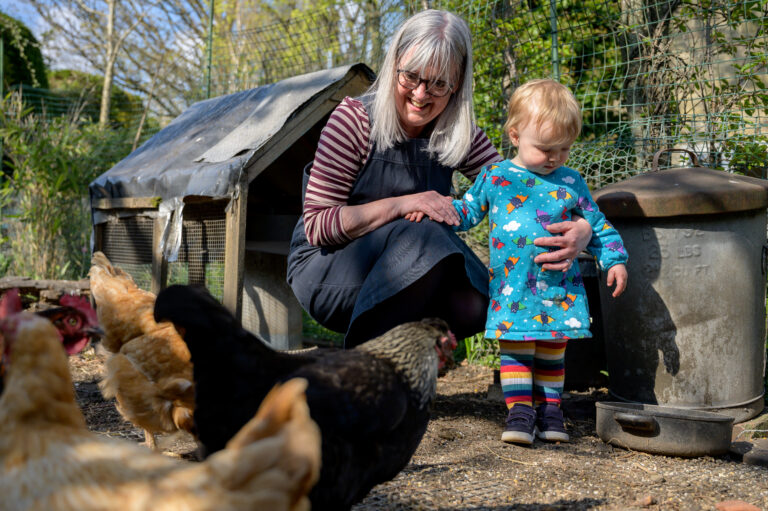
Why is eating for wellbeing important?
Eating the right foods is essential for our health and this is especially true as we get older. Sometimes, we might think some foods are “good” and some are “bad”. But focusing too much on this can be harmful to our overall wellbeing and even affect how we feel about ourselves.
As we grow older, our bodies’ needs change, and studies have shown that it’s crucial to eat a variety of foods. This helps to keep us strong and healthy.
But there’s more to eating than just nutrition. Enjoying food with friends and family, and listening to when we’re hungry or when we want a particular dish, is equally important. It’s not just about what’s on our plate, but also about the joy, comfort and connection with others that food brings.
Making food choices that make us feel good can lead to better health and less need for medicines. It also helps us stay active and independent.
Remember, it’s okay to enjoy your favourite meals. When we stop labelling food as ‘good’ or ‘bad’ and instead listen to our body’s needs, we’re practising self-care. This way of thinking about food – focusing on our overall wellbeing – is what we call eating for wellbeing.
Learn more about eating for wellbeing and the healthy at any size movement and watch the HAES Australia President, Louise Adams, talk about rejecting diet culture.
Women’s changing nutritional needs as we age
As we get older, our daily energy needs may start to decrease, especially if we are not as physically active compared to our younger years. Even though we tend to eat less, our nutritional needs do not decrease – and in some cases increase as we age. Having a positive relationship with food and eating a wide variety of foods can improve our health and wellbeing and overall quality of life.
Older women in particular can experience varying nutritional needs. This is because of the permanent reduction in oestrogen during menopause (and you can read more about some of the physical changes that happen in our Menopause section). Adapting to the changing nutritional needs of our bodies as we age becomes increasingly important to optimise our health and increase our longevity and quality of life.
There are a number of straightforward steps we can take with the food we eat, to prevent against some of the risks that we face as we age.
Protein
Eating more protein is a simple way to prevent muscle mass from declining. This in turn can reduce our risk of becoming frailer. This is important because it helps us stay independent and active. Meat is a common source of protein, and it’s also found in plenty of other foods suitable for a vegetarian or vegan diet, including oats, eggs, tofu, nuts and legumes.
Calcium and vitamin D

Increasing calcium and vitamin D can help to maintain strong and healthy bones and muscles, and reduce our risk of osteoporosis and bone fractures (which can be a risk due to a change in bone mineral density). Some easily accessible sources of calcium are milk and milk products, leafy green such as spinach, broccoli and bok choy, fish, nuts and seeds.
Vitamin D is most easily absorbed from the sun. For most people, we can reach adequate vitamin D levels through incidental exposure to the sun. Using sunscreen and other sun protection measures does not put us at risk of vitamin D deficiency. In late autumn and winter when the UV index falls before 3, we may need to try to spend some time outdoors to help boost vitamin D levels.
Salt
Being mindful of our salt intake is one way to reduce our risk of cardiovascular disease, which can be correlated with the onset of menopause. Making small changes to our daily salt intake can help to reduce the risk of blood pressure, which is a known preventable risk factor for cardiovascular disease. For more information on this, see Heart health.
Food and arthritis
As we age, we can become more prone to developing arthritis. There is no miracle diet that can completely get rid of arthritis symptoms, but some studies have shown that eating foods with anti-inflammatory properties can help to reduce the symptoms.
That means including in your meals foods with monounsaturated fats (think avocados, peanuts, almonds) and fats high in omega-3 (like sardines, walnuts, soybeans), as well as fish, nuts and seeds, whole fruit and vegetables, beans and legumes. Try to reduce the amount of saturated fats you eat, which are found in red meat, poultry and full-cream dairy.
Arthritis Australia (2017) Healthy eating
Australian Human Rights Commission (n.d.) Chapter 4: The role and influence of the media
Bärebring L, Palmqvist, M, Winkvist, A et al. (2020) Gender differences in perceived food healthiness and food avoidance in a Swedish population-based survey: a cross sectional study. Nutrition Journal
Bernstein M (2017) Nutritional needs of the older adult. Physical Medicine and Rehabilitation Clinics of North America. 28(4), 747-766
Better Health (2017) Nutrition needs when you’re over 65
Butterfly (2023) Body pride resources
Butterfly (2023) Boosting body image
Butterfly (2023) Health not weight
Butterfly (2023) LGBTQIA+ people, eating disorders and body image
Butterfly (2023) People from multicultural communities
Cameron E, Ward P, Mandville-Anstey SA, Coombs A (2018) The female ageing body: A systematic review of female perspectives on aging, health, and body image. Journal of Women and Ageing. 31(1): 3-17
Carrard I, Rothen S, Rodgers RF. (2020) Body image and disordered eating in older women: A tripartite sociocultural model. Eating Behaviours. 38(101412)
Carrard I, Rothen S. (2020) Factors associated with disordered eating behaviours and attitudes in older women. Eating and Weight Disorders – Studies on Anorexia, Bulimia and Obesity. 25: 567-575
Eat for Health (nd) Healthy eating when you're older
Eating Disorders Families Australia (2022) What is HAES?
Eating Disorders Victoria (2022) Eating disorders explained
Feel Good Eating (2021) What is HAES?
Hanna KL, Collins PF (2015) Relationship between living alone and food and nutrient intake. Nutrition Review 73(9), 594–611
Health Direct (2023) Risk checker
Hofmeier S, Runfola C, Sala M, Gagne D, Brownley K, Bulik C. (2017) Body image, ageing and identity in women over 50: The gender and body image (GABI) study. Journal of Women and Ageing. 29(1): 3-14
Kilpela LS, Becker CB, Wesley N, Stewart T. (2015). Body image in adult women: Moving beyond the younger years. Advances in Eating Disorders. 3(2): 144-164
My Aged Care (2023) Meals and food preparation
National Council on Ageing (2021) How to stay hydrated for better health
Nutrition Australia. (2021) Nutrition and older adults
Placzek O (2021) Socio-economic and demographic aspects of food security and nutrition. OECD Food, Agriculture and Fisheries Papers
Pontzer H, Yamada Y, Sagayama H, Ainslie P, Andersen LF, Anderson LJ, et al. (2021) Daily energy expenditure through the human life course. Science 373(6556): 808-812
ReachOut (2023) Support services for eating disorders
Samuels KL, Maine MM, Tantillo M (2019) Disordered eating, eating disorders, and body image in midlife and older women. Current Psychiatry Reports. 21(70)
Silva TR, Oppermann K, Reis FM, Spritzer PM (2021) Nutrition in menopausal women: A narrative review. Nutrients. 13(7)
Transhub (2021) Body image
Wallace TC, Bailey RL, Blumberg JB, Burton-Freeman B, Chen O, Crowe-White KM, et al. (2019) Fruits, vegetables, and health: A comprehensive narrative, umbrella review of the science and recommendations for enhanced public policy to improve intake. Critical Reviews in Food Science and Nutrition. 60(13)
Yeung SSY, Kwan M, Woo J (2021) Healthy diet for healthy ageing. Nutrients 13(12)





